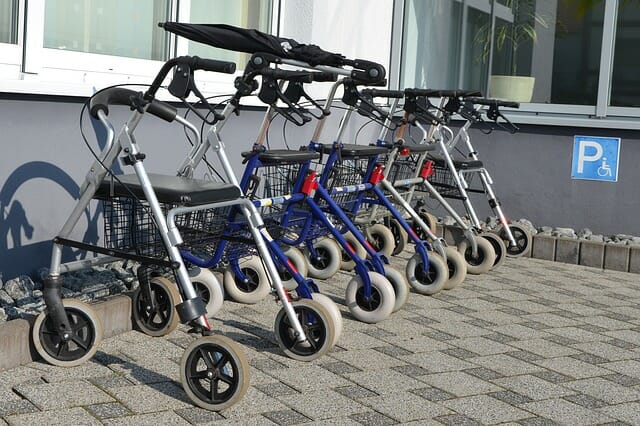Walking aids have significantly increased a sense of independence among people who need physical help to move around. People would have a problem moving around if they were suffering from a medical condition that might have affected their limbs, loss of sight, old age, among many other factors. Getting the perfect walking aid will play a significant role in ensuring you can effectively move around as you might need.
Getting the ideal walking aid equipment is determined by several factors, including your balance, neurological and cognition conditions, which a physiotherapist or occupational therapist might assess. The type of aids may vary depending on the purpose it will serve. Some might get to use different walking aids simultaneously. More measures might be included on top of your walking aid, like modifying your car or staircase to suit your needs.
Walking frames
Also known as walkers, it offers the most support for people with less body balance and less upper body stability because they have four legs. Nowadays, walking frames for sale have been improvised to create more effortless mobility, some with wheels to push forward and brakes on them for safety purposes, some are foldable, walkers with a broader base making them more stable, for some they have seats which can be pulled once the user is tired and for the standard walker, the weight standardised to make it easy for lifting among other properties.
Crutches
Crutches primarily work for people with upper body strength since the needed power of walking is transferred to the upper body. Some people might use one crutch while others use them in pairs. There are different types of crutches;
• Underarm crutches – these are also known as axillary. One part of the crutch is placed under the armpit with a handgrip that the user hole on too. The underarm crutches are mainly used for short term purposes.
• Forearm crutches- another name for these crutches is lofstrand crutches. These crutches involve placing your arm in a plastic cuff and holding on to a handgrip. People use these crutches for long-term purposes
• Platform crutches are used by people with conditions that don’t have a firm hand grip, like cerebral palsy. They involve the hand holding a grip as the forearm rests on a horizontal platform.
Canes
Canes are also known as walking sticks. Just like crutches, they support the upper body weight. Canes are most effective for people who have a balancing problem as they walk and stand. Types of canes might include white canes used by visually impaired people, forearm canes that transfer most of the bodyweight to the wrist while walking or standing and quad canes with four legs at the base to offer much stability.
Wheelchairs
Wheelchairs are suitable for people who cannot walk and might be used simultaneously with walkers while travelling longer. Advancement in the design of wheelchairs has made it easier for the user to move without the help of someone else since there are affordable wheelchairs powered by electricity and others that allow the user to push themselves. These advancements have brought about standing wheelchairs which support the user in a position that looks like they are standing, and sports wheelchairs built for the sole purpose of participation in sports.
Guide dogs
A gripping mobility aid is a guide dog. The dogs are trained specifically to guide visually impaired people. Not only does the guide dog help the owner navigate obstacles, but it is also a therapeutic animal that helps achieve positive psychological and social effects. Dogs are not a standard mobility aid, mainly because dogs might not get into stores and buildings. In this case, a person needs to combine the guide dog and a white cane.
Scooters
The difference between scooters and wheelchairs is that scooters might have one less or one more wheel than the wheelchair, and scooters have a handlebar or steering wheel to control directions. Scooters are battery charged—people without upper body strength who might not use a regular wheelchair. Scooters have had a positive impact on users in that they have complete control of their movement.
Indoor aids
Apart from moving outside, there is a need to put up safety measures to help mobility in the house or office. These aids might include
• Ramps-ramps are used mainly by people who cannot use stairs like wheelchairs and scooters.
• Stairlifts- these might move people along the staircase together with their wheelchairs and other walking aids.
• Handrails- handrails are primarily fitted in the bathroom or restrooms for stability.
Conclusions
A person with a temporary or permanent mobility issue can benefit from either of the above mobility aids. Specific needs will be met by getting the right mobility aid for yourself or your loved one. Mobility aid might, however, have its setbacks like crutch paralysis caused by long term use of underarm crutches.




